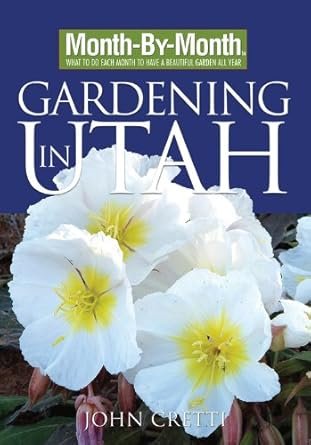Unlock a Year-Round Garden in Utah: The Indoor Revolution Has Begun
It starts with a simple truth:
You want to grow fresh food… but Utah’s climate won’t always cooperate.
Blistering summer heat. Arid air. Unexpected frosts. Limited rain. These aren’t gardening challenges—they’re gardening death sentences.
But what if I told you there’s a new way to garden? One where Zion’s desert heat, Salt Lake City’s frost, and Utah’s unpredictable seasons don’t matter?
What if you could grow tomatoes, kale, strawberries—even herbs—all year, indoors?
This is not hype. This is indoor gardening in Utah—and it’s the future of homegrown food in the Beehive State.

Why Indoor Gardening in Utah Is Exploding in 2025
In a world shifting under climate pressure, Utahns are facing more than just droughts. They’re facing the end of reliable outdoor growing.
That’s why smart gardeners are pivoting from “weather-dependence” to climate resilience. They’re not giving up on gardening—they’re moving it indoors.
Top Reasons Utahns Are Embracing Indoor Gardening:
- Indoor gardening Utah climate solution: No more extreme heat or frost damage.
- Water-wise growing: Controlled irrigation means 70% less water waste.
- Fresh, local produce all year—without pesticides.
- Supports Utah climate adaptation goals.
- Boosts mental health with year-round greenery.
You don’t need acres. You don’t need a greenhouse. You just need a few square feet, the right tools, and a plan.
Let’s break that plan down.
Gardening Month by Month in Utah—Indoors
In Utah, outdoor gardening is seasonal. Indoors? It’s unstoppable.
Here’s how you can tailor your indoor gardening Utah month-by-month:
- January – March: Start leafy greens, microgreens, and herbs indoors.
- April – June: Introduce fruiting plants like tomatoes and peppers under grow lights.
- July – August: Grow tropicals indoors while it’s too hot outside.
- September – December: Cycle back to herbs, lettuce, and dwarf root vegetables.
Yes, you can grow food in December in Park City. No greenhouse needed.
What You Need to Start Indoor Gardening in Utah
Let’s make this simple. You’ll need:
- Full-spectrum grow lights (LED, energy-efficient)
- Self-watering containers or fabric pots
- Climate-adapted potting soil
- Humidity control (optional humidifier)
- Shelving or hydroponic system (optional)
Utah’s low humidity can stress indoor plants—but that’s fixable with water trays or pebble trays.
Bonus Tip:
Use your south-facing windows in Salt Lake City, Provo, or Ogden for sunlight lovers like basil and strawberries.
Best Indoor Gardening Systems for Utah Homes (Comparison Table)

Search term boost: indoor gardening systems Utah, Utah indoor garden kits, best indoor grow setup for Utah
A Must-Have Guide: “Month-by-Month Gardening in Utah”
While this book focuses on outdoor gardening, its principles are pure gold when applied indoors. Timing. Temperature. What grows when. It demystifies the Utah gardening calendar and helps you sync your indoor efforts.
Why it matters: Most indoor guides ignore Utah’s extremes. This one? It was made for you.
Why Indoor Gardening Works in Utah
Utah’s climate can be tough for year-round gardening. Cold winters and hot, dry summers challenge even seasoned growers. Indoor gardening offers a way to bypass these hurdles—no worrying about frost, heat waves, or soil quality.
With a few simple tools and a sunny window, anyone can enjoy gardening indoors, even in apartments or homes without yards.
What You’ll Need
The best part? It’s affordable and low-maintenance. Here’s what you need to get started:
- Shallow containers: Use recycled trays, small tubs, or even baking pans (2–4 inches deep).
- Potting mix or coconut coir: Avoid outdoor soil—it can harbor pests and diseases.
- Seeds: Lettuce, spinach, Swiss chard, radishes, and herbs like cilantro and basil thrive indoors.
- Sunlight: A south-facing window is ideal. Most leafy greens need 4–6 hours of sunlight daily.
- Water: A spray bottle or watering can to keep soil moist but not soaked.
Best Crops for Indoor Growing
Not all plants thrive indoors, but these do especially well in Utah’s home environments:
- Leafy greens: Lettuce, arugula, kale, and Swiss chard grow quickly and don’t need deep roots.
- Herbs: Basil, chives, parsley, and mint add fresh flavor and grow well in small pots.
- Radishes: These root veggies mature fast and take up little space.
- Pea shoots and microgreens: Harvest in just 2–3 weeks for nutrient-packed garnishes.
Tips for Success
- Rotate trays daily if light comes from one side to avoid lopsided growth.
- Keep temperatures between 65–75°F. Too hot or cold can slow growth.
- Don’t overwater. Let the top of the soil dry slightly between waterings.
- Start small. Experiment with one or two crops before expanding.
Indoor Gardening Projects for Families and Schools
Indoor gardening is perfect for kids and educational programs in Utah. It’s a great way to teach:
- Life cycles and plant science
- Responsibility and patience
- Sustainable food practices
Start a windowsill lettuce garden or grow microgreens in recycled containers—fun, quick, and educational.
The Utah Gardening Climate Dilemma—Solved
The Utah gardening climate is one of the toughest in the U.S.:
- High elevation = intense sun
- Arid air = rapid soil drying
- Short spring and fall seasons
- Risk of frost through May in some regions
The result? Outdoor gardening is a gamble. Indoor gardening? A guarantee.
And in the style of Hussain,: You are not selling a grow light—you’re selling certainty, control, and peace of mind.
How Indoor Gardening Solves Utah’s Climate Puzzle
Here’s how indoor gardening Utah climate adaptation becomes real:
- Say goodbye to frost dates.
- Use less water with hydroponics or drip irrigation.
- Create humidity where none exists.
- Grow heat-sensitive crops without scorching them.
- Integrate Utah gardening climate data via indoor sensors.
With the right setup, you’re not reacting to Utah’s climate—you’re mastering it.
Real Talk: What’s Stopping You?
Let’s be honest.
- “I don’t have time.” → Smart systems water and light for you.
- “I’m not an expert.” → YouTube, books, and kits make it simple.
- “I have no space.” → A 2-foot shelf is enough.
Your doubts are valid—but your potential is bigger. And as Hussain said, Don’t create desire—channel it into action.
The Emotional Value: More Than Plants
This isn’t about lettuce.
This is about control in a chaotic world.
It’s about joy in a dry climate.
It’s about resilience in your DNA as a Utahn.
Your grandparents grew in hard soil. You? You grow in a smart indoor system—just as tough, twice as clever.
Step-by-Step: How to Start Indoor Gardening in Utah
- Pick your space (windowsill, shelf, closet).
- Choose crops suited for indoor growing: lettuce, herbs, strawberries, tomatoes.
- Buy your tools: grow light, containers, soil.
- Set a timer for lights (12–14 hrs/day).
- Track progress using a journal or plant care app.
- Celebrate your first harvest (and post it with #IndoorGardeningUtah)
Final Word: Be the Indoor Garden Pioneer Utah Needs
Utah is known for rugged landscapes and resilient people. Now it’s your turn.
You don’t need a field.
You don’t need perfect weather.
You just need a seed. A light. A decision.
Your neighbors will say, “It’s too dry.”
You’ll say, “I just harvested kale in February.”
Welcome to the indoor gardening Utah climate revolution. You’re not just growing food—you’re growing freedom.
#IndoorGardening #UtahGardeners #GrowIndoors #SmartGardening #HomegrownUtah #IndoorFarming #GardeningUtah #HydroponicsUtah #ClimateSmartGardening #GrowFoodAnywhere
#UtahGardening #SaltLakeCityGarden #ProvoGardeners #StGeorgeGardens #OgdenGrowers #WasatchFrontGarde

